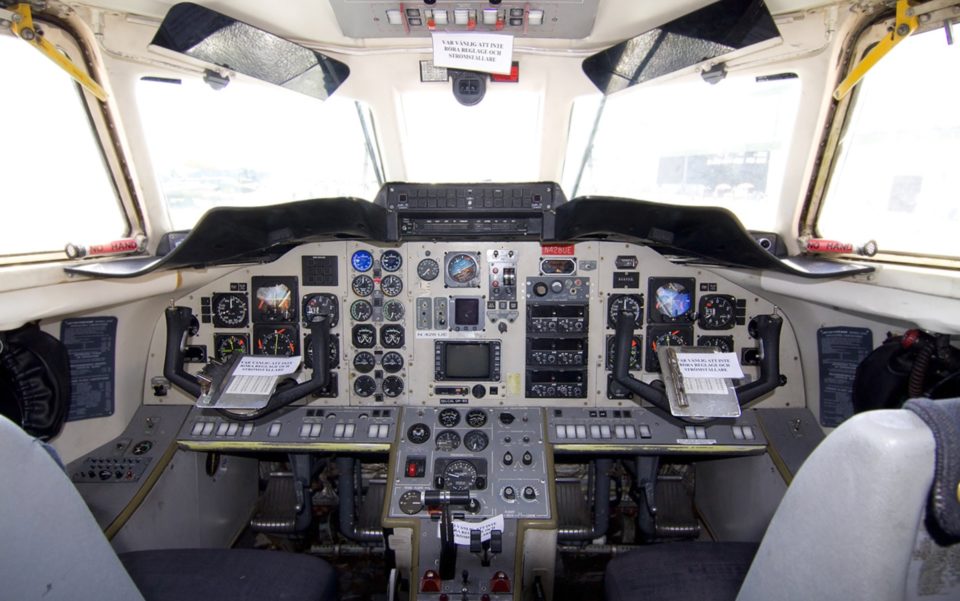On a stormy night in November of 2006, I was flying eleven people including the Governor of Tennessee into Jackson, Tennessee for a campaign event leading up to the election. The weather was nasty, but we had navigated through the worst of it and were about to land. However, right before we touched down, some warning lights went off and it became apparent that we had experienced a total hydraulic failure.
We immediately understood the aircraft systems impact was significant and included issues with steering, brakes, landing gear, and flaps. So that we could find an airport with emergency services and better understand the issue, my copilot and I aborted the landing and started climbing back to safe altitude.
With lightning in the distance and only a few hundred feet between us and the ground, I felt a tap on my shoulder. It was the governor. “What’s going on? Are we still going to be able to land?” Understanding that he was an aviator himself, I calmly responded – “Do you want to die tonight?” He quickly indicated that he did not. I then told him to please sit down, make sure everyone else stays seated, and use his leadership to keep the people calm. He did exactly this.
When the entirely unexpected happens, the recipe for success can be elusive. However, during my time as a pilot and in business, I have found the following ingredients helpful:
1. Prioritization:
Yes, the Governor was paying for the flight. He is one of the most important people in the State of Tennessee. He deserves an answer. However, none of that takes priority over his and the other passengers safety. An unconscious, quick prioritization exercise made it apparent that a conversation with him could wait.
2. Teamwork:
With a high-profile client onboard delayed and changing destinations, we needed to update the State Troopers and his on-the-ground security/transportation. However, we had our hands full with a ton of checklists (see below) that had to be executed accurately. Instead of overloading ourselves and potentially missing a critical item, we leveraged Air Traffic Control – they have a direct line to law enforcement and they were able to appropriately elevate the situation quickly and without any effort.
3. Processes:
Landing without brakes and without flaps can be a big deal. You need a much longer runway and have to consider additional failures. What caused the total hydraulic failure (this means we had two separate, redundant hydraulic systems fail!) and what else might fail? The checklists, which are created by the aircraft engineers, aviation safety experts, and experienced pilots, help guide you through an established process to maximize the chance of success. Oftentimes, in business it is similar – make a process on the best day and apply it on the worst to increase the chances of a positive outcome.
4. Training/Expertise:
We can’t be good at everything in life, but our training will ultimately determine how we react in stressful, time sensitive situations. The life-and-death decisions that a pilot makes during an emergency should have been set up well long before. The aggregate of all training and experience in the classroom, simulator, and flying the line equate to quick recognition, diagnosis, and reaction when it is required.
5. Stacking – Avoid the Snowball
This ties closely to several of the other points above. The idea here is we have to start solving problems quickly to avoid a ‘stacking’ effect. For example, one problem we had right away was that we were close to the ground. Until we solved that problem, it was going to take a ton of concentration and could exponentially multiply other issues we were facing (i.e. flaps not retracting). On the other hand, once we had altitude and airspeed, the flaps weren’t a big deal. A wet runway (in Jackson) was a huge deal without breaks and emergency services, but as soon as we decided to divert to Nashville International that was no longer an issue. Do your best to ‘unstack’ ASAP when you are faced with an insurmountable problem. If you freeze up, additional items will quickly start to stack.
Thankfully, after Ned (my copilot) and I ran through the checklists, communicated the emergency with ATC, and navigated to Nashville International, the evening ended with no damage to the aircraft and everyone made it home safely. In addition, the Tennessee State Troopers and ATC had coordinated beautifully and the Governor’s transportation and security detail were standing by and ready for him.
Aviation does a great job of applying the above principles each day – if we do this in our business, positive results are nearly guaranteed.

